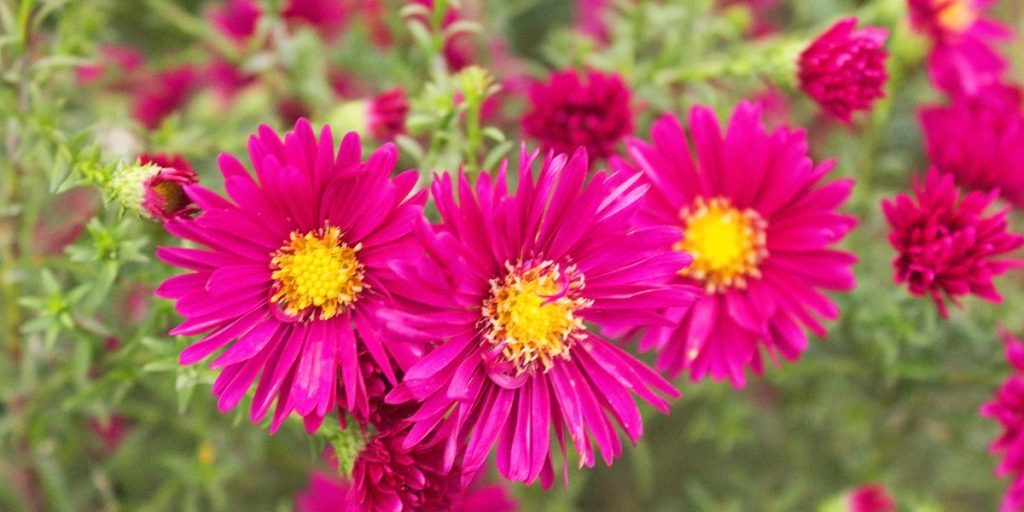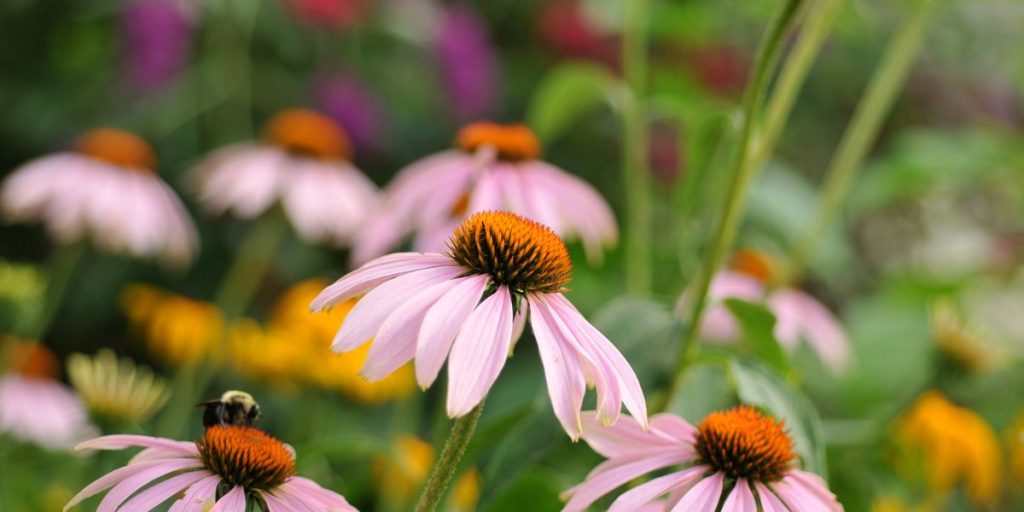Perennials return yearly, regrowing from the same root system each spring. Technically, yes, perennials come back every year. This is in contrast to annuals, which only live for one season and then die off. Perennials can be a great addition to any garden because they require less maintenance than annuals and provide a reliable source of color and texture throughout the growing season.
When shopping for plants, you may notice that some are labeled annuals while others are labeled perennials. The plant can grow back the following year which differentiates the two types.
Annual plants die after their season ends, while perennials typically return each year with minimal effort. Perennials can be a great way to add color and texture to your garden without replanting each year. They also require less maintenance than annuals since they don’t need to be replaced annually.
Table of Contents
Life Cycle of a Perennial
Perennials are plants with a life cycle extending beyond one growing season. It depends on the plant and the harshness of winter weather whether they are able to survive through the winter and come back year after year.
During this dormant period, the above-ground part of the plant dies back to the ground while its roots remain safe beneath the soil. This ensures that these perennials will be ready to bloom when spring comes around again.
However, not all perennials can survive through every winter. Some may succumb to extreme temperatures or be cold hard enough for their zone. In such cases, gardeners must take extra care in selecting suitable plants for their climate and environment to ensure they will return each year. With proper selection and care, however, these perennials can provide years of beauty and enjoyment in any garden setting.

The Lifespan of a Perennial
Perennials are plants that come back year after year, often providing beautiful blooms and foliage for gardeners. While perennials may last longer than annuals, they do not live forever. The lifespan of perennial plants varies greatly depending on the species.
Some perennials, such as Brown-Eyed Susan, Shasta Daisy, and Malva, are short-lived and only live for a few years. Others may live 15 years, while others can even live a lifetime. Peonies are an example of a plant that can last a lifetime if given the right conditions.
No matter what type of perennial you have in your garden, it is essential to understand its lifespan to plan accordingly. Knowing how long your perennials will last will help you decide when to replace them with new varieties or divide them to keep them going for many more years. With proper care and maintenance, many perennials can be enjoyed for many seasons.
Maintenance of Perennials
Perennials are a great addition to any garden, as they come back year after year with minimal effort. However, in order to keep them looking their best, there are a few maintenance tasks that should be done regularly.
Fertilizing once a season provides nutrients for healthy growth and blooms. During dry seasons, it’s important to water deeply and avoid getting water on the leaves as much as possible. Mulch can also help retain moisture and keep weeds at bay. Finally, pinching back growth can produce a denser plant with more blooms.
By following these simple steps, you can ensure that your perennials stay healthy and look their best all season long. With just a bit of effort, you can have beautiful plants that will come back year after year without needing too much maintenance or care.
So don’t forget to give your perennials some love this season and enjoy the rewards of having beautiful flowers in your garden.
How do I Regeonize Perennial?
Perennials are plants that come back year after year, usually from their root systems. Recognizing a perennial can be tricky since many perennials look similar to annuals and other types of plants. However, there are a few distinguishing characteristics that you can look for when trying to identify a perennial.
First, perennials often have different growth habits than annuals. Perennials tend to have thicker stems and more woody growth than annuals. Additionally, perennials often produce flowers in the same area year after year, while annuals may only flower for one season. Finally, perennials tend to have a longer blooming period than most annuals.
By looking for these characteristics, you can easily identify which plants are perennials and which are not. Once you’ve identified a perennial, you can enjoy its beauty for many seasons.
Perennials are a great choice for gardeners who want to enjoy beautiful blooms and foliage without replacing plants every season. With proper care and maintenance, perennials can be enjoyed for many years.

What do Perennials Like? Sun or Shade?
Perennials are plants that come back year after year and can be a great addition to any garden. They’re easy to care for and provide reliable color and texture throughout the growing season. But when it comes to light requirements, perennials can be divided into two categories: those that prefer sun and those that prefer shade.
Plants that prefer full sun usually need at least six hours of direct sunlight a day. These plants are typically drought-tolerant and need plenty of heat to thrive. Common sun-loving perennials include lavender, coneflower, and yarrow.
On the other hand, shade-loving perennials usually need less than four hours of direct sunlight a day. These plants are often more sensitive to heat and prefer cooler temperatures. Popular shade-loving perennials include hostas, ferns, and astilbes.
When selecting plants for your garden, it’s important to consider the light requirements of each plant. By choosing a mix of sun- and shade-loving perennials, you can create a beautiful garden that will last for many years.
Frequently Asked Questions [FAQs]
1. What is the most popular perennial?
One of the most popular perennials is coneflower, also known as Echinacea. It is a beautiful flower that blooms from mid-summer to fall. Coneflower is native to North America and grows best in full sun or partial shade. Its bright purple petals are a favorite among gardeners for their beauty and long blooming period. The daisy-like flowers attract pollinators and make great-cut flowers.
2. Do perennials need to be pruned?
Perennials should be regularly pruned to maintain their shape and encourage new growth. Pruning also helps remove dead or diseased growth and can help keep pests at bay. It’s best to prune in early spring before the plant starts to grow again.
3. How often should perennials be fertilized?
Perennials should be fertilized in early spring when the plant grows again after winter dormancy. Fertilizer will help provide nutrients and encourage strong growth throughout the growing season. Depending on the type of fertilizer you choose, you may need to fertilize your plants every couple of months or once a year. Be sure to follow the instructions on the fertilizer label for the best results.
4. How do I know when to divide my perennials?
The division is a great way to keep your perennials healthy and encourage new growth. It’s best to divide your perennials every three to five years, depending on the type of plant. In general, you should divide clumping plants like irises and daylilies every three years, while spreading plants like phlox and hostas should be divided every five years.
5. Do perennials need a lot of water?
It is generally recommended that perennials receive about an inch of water per week in order to stay healthy. A combination of rain and irrigation can do the trick. Calculate how much rain has fallen using your rain gauge, and then subtract that amount from one inch. Based on this, you will know how much supplement you need each week.
Conclusion
Perennials are great for gardeners of all levels because they come back every year. They require extra care and attention, such as regular pruning and fertilizing, to remain healthy and beautiful. With the right combination of sun- and shade-loving perennials, you can create a stunning garden that will last for many years.

